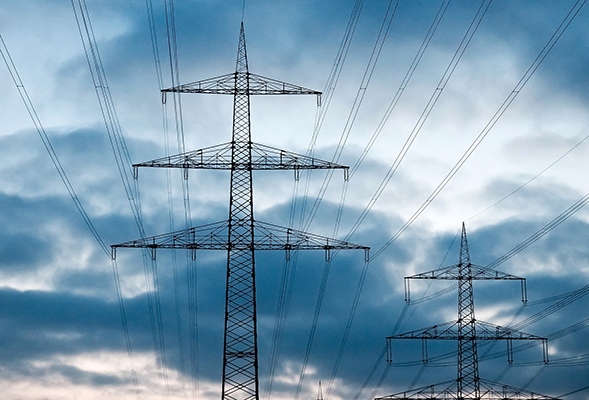California Wildfires: What to Expect
SDSU's Joaquin Camacho says the power shutoffs being contemplated for wide areas of California are partly a result of infrastructure choices made a hundred years ago.

California’s three major electric utilities are preparing for a weekend of possible power shutoffs as a safeguard against hazardous, downed lines like those that caused the fire that swept through the community of Paradise last year.
Joaquin Camacho, an assistant professor of mechanical engineering at San Diego State University, has studied energy efficiency in manufacturing plants and their interrelationships with utilities. He heads SDSU’s Energy FANS (Flames, Aerosols and NanoScience) Lab, housed in the Engineering building.
At a time of 90-degree temperatures, red flag warnings in several counties and a wildfire in Sonoma County that has covered more than 21,000 acres and forced the evacuation of the town of Geyersville, SDSU NewsCenter spoke to Camacho about how the wildfire problem got so bad, what it takes to improve public response, and what he calls the “nuclear option” of preemptive power shutoffs affecting hundreds of thousands of residents at a time.
How is the current wildfire season shaping up?
Last year was a whole different ballgame in Northern California with Paradise and others. That level hasn’t been seen this year, so that’s a good sign. But we’re still early so we have to wait and see. I think this year we’re going to have a new factor, which is this more active public safety shutoffs. That will probably decrease the number of fires and decrease the devastation. But it’s something that the public is going to deal with.
When PG&E shutoffs happened in a wide area of Northern California a few weeks ago, people complained because the high winds never developed. Are false alarms something we have to get used to?
I guess we don’t have a choice. In the short term the precedent has been set in terms of this big widespread outage. It makes sense just as a logical next step that other utilities will be more likely to implement, these large-scale shutoffs, and of course no one is a perfect weatherman so I guess that comes along with potential false alarms.
Did they do the right thing?
It was a nuclear option, meaning that it was an effective option for preventing new fires but this was far from a pinpoint solution. Instead of pinpointing one problem, you blast the whole area. That’s what happened.
How is science and research helping us in terms of awareness, prevention and taking the right steps?
Scientists are always doing the right thing, they’re always getting the facts, and we’re always going to try to get some objective observations, some objective results. One thing in terms of awareness that has made a difference is these huge devastating fires, they become a huge media story. That raises awareness more than scientific results, unfortunately. We probably have been predicting this for a long time but it takes a huge fire for people to listen.
Do you see people becoming complacent when it comes to shutoffs and wildfires?
I think people are aware that these wildfires exist in terms of the fire season. The awareness is being raised I think because of these big events. And in terms of complacency, I am sure that if these emergency power shutoffs take place more often on a wider scale, then people will become less complacent.
Are there other measures we should be taking that we haven’t started yet?
I think everyone knows what the problems are, what the potential solutions are. A lot of those have gotten started for many reasons—some of them regulations, some of them media pressure, some of them public pressure, and I think that they’re late. These problems should have been looked at from the beginning.
One reason is that this is a natural ecosystem in which fires are the norm every year. That’s not a surprise, the utilities built this infrastructure knowing that. Perhaps regulation should have had to recognize this as well. So from the beginning, the 100 years that this infrastructure has existed, we should have accounted for this danger.
What have been the obstacles?
Cost. Profit. It is a regulated industry but it is a for-profit industry. The long-term grid infrastructure was not designed for fires because they wanted to save money and cut costs. Now that this problem exists on a bigger scale, the nuclear option is the most effective fire prevention measure, but by-products such as economic cost could be bad.
As the effects of climate change get stronger, should we expect more of this then?
Yes, for two reasons. The natural cycle has always been there and there’s evidence that the manmade causes have been exacerbating the cycle. And now with the shutoffs that adds another factor, and this may lead to backlash from these shutoffs.



